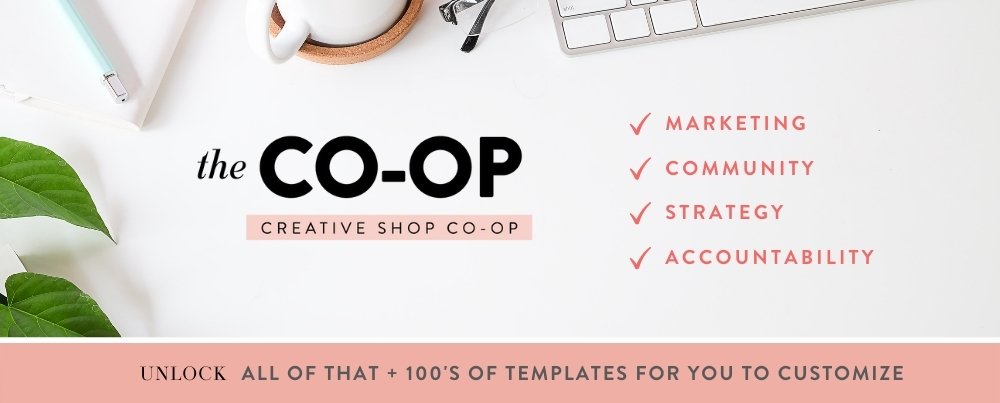Goal Crusher Club – Part 3: How to Figure Out What to Pay Yourself
Episode 208: Show Notes
Welcome to Part Three of the Goal Crusher Club Series! Today on the podcast, we are talking about the fun side of business – getting paid! Woohoo! Getting paid should be an exciting and rewarding part of business; but who knew that it could be the cause of so much anxiety and confusion, right? We want to give you a little break here today and share with you what we have used in the past to help us define what to pay ourselves as business owners and how that works for us today since our business has grown. If you have severe anxiety around money, we totally understand the fear of not wanting to pay yourself.
A lot of the time people are either afraid money is going to disappear or it is supposed to be allocated toward something else or are just simply feeling that they don’t deserve that money. This is something to be aware of going into this episode but for the most part, we are going to be diving into the different formulas you can use in order to figure out what to pay yourself. We will also be discussing helpful tools to help you with payroll, saving for taxes, saving for retirement, how to separate your income into different bank accounts and what determines a “reasonable” salary.
A Good Place To Start: How We Split Our Income
When Abbie first met Emylee, Emylee literally had no clue what she was paying herself. No clue. It was not being tracked appropriately because when it comes to money coming into her business, this is where Emylee’s imposter syndrome kicks in. She sees it as not being hers and not being real. We see a lot of people go through this mindset and we see a lot of them get burnt out because they are not being financially rewarded for what they are doing. Another point is so many of us start our businesses as a side hustle, when we are still making money from our full-time jobs and we don’t “need” the money. So as soon as the side hustle starts to become profitable, we still don’t take anything from it because we still have stability from somewhere else. Either a full time job, or perhaps our partner’s income.
Whether this is you or not, we want to give you a good place to start if you are a sole-proprietor. This is the exact same method that we used in the beginning. News flash, when we started, we were technically sole proprietors that contracted each other. Every dollar that came in, got split three ways. 50% would go to us, or in this case, you. 30% would go to savings for taxes and 20% was re-invested into the business, either through marketing, education, materials, contractors, people, etc. That 20% in the beginning, was used on systems and the 30% savings we would keep separate from our personal income until tax time.
So What Is A “Reasonable” Salary And A “Reasonable” Bonus?
In 2017, we switched to an LLC S-Corp and what that allowed us to do was run payroll and be on a salary. We all of a sudden became employees of our own business and on top of that we were able to bonus ourselves out based on the performance of the company. But the bonuses are taxed differently because of the corporate structure and it really gives you a nice cushion! A “reasonable” payroll is what is required by the IRS. For example, you can’t pay yourself $1 and then bonus yourself out $100,000 just because it’s taxed differently. That’s what they are trying to get you to avoid. However, the IRS does not have any standards on this. So really, you want to be more “reasonable” than what you think you should be because no one wants to get audited. For us, as two CEOs, our payroll / salary is around $50,000 a piece. This means we are still in the “reasonable” section but it still leaves room for bonuses. In general, we would advise that you have your payroll, depending on how your business is going, be somewhere between 20%-28%. But typically, you do end up getting around 50% of every dollar that you make. It’s just about what comes out as payroll and what comes out as bonuses.
Consider Your Business Shift After You Start Hiring
A lot people talk about how your business has to shift when you start hiring. Like you have to offer a 401(k) and other benefits. For us, we don’t count as two employees because technically both of us own 50% of the company. So some people may think we have those things because there are two of us, but we are still technically the only two employees of TCC but it’s not counted as such. Some of those stipulations change after you have five employees and for the majority of you, that’s probably not something you are worried about. But just keep in mind, when you change staff structures, it’s not just about changing how you track and change your money – there are a lot of other things that you need to consider. As an LLC, we are protecting our personal assets automatically but that doesn’t mean that we are shielding our company from a lawsuit if someone trips and falls in our house! There are still things that you have to consider.
How To Handle The Giant Hairy Mess Of Payroll Paperwork
There is this mystery around payroll, because well not many people have ever had to do it! Unless you were an accountant in a previous life. Payroll sounds great but it can make a lot of us nervous because all of a sudden you have to pay taxes, social security, etc and we know we were so overwhelmed when we first had to tackle this. Parker, our accountant, advised us to check out Gusto, a payroll provider that handles a lot of the giant hairy mess. Seriously, if you are running a payroll you need a payroll provider. That is non-negotiable. You have to pay a small fee on a monthly basis but #WorthIt. Gusto pays all of the things to all of the places automatically and you don’t have to handle it! It’s as close to done for you as you could get. If you are interested in payroll or are like, “What are they even talking about?” Then go to thestrategyhour.com/gusto where you can login, check it out and see what it’s like. It’s awesome, we can’t recommend it enough.
When We Became Smart And Got Our Simple IRA
So, if you work for another company, they generally offer you a 401(k), where each month money is going toward your retirement. For small businesses, that piece often gets forgotten. But the truth is you can set up your own 401(k) and it’s super smart to have. If you have a financial adviser, we highly recommend talking to them. Our financial adviser, to our benefit, is both handling our personal and business financial growth structures. He has helped us align what we need to be doing for retirement to make sure it works for our personal lives. A simple IRA is what he suggested to help us get started. There are a couple different kinds (which we can’t remember the names of) but ask someone who knows these things and get it set up! We withhold a part of our paycheck to go to retirement and the really cool part is, because of the way our business is structured, the company can match it.
Why You Need To Be Tracking And Reconciling Everything
Realizing that you didn’t save enough for taxes is the absolute worst. The only thing worse than that, is getting audited. You can protect both of those things by just using the formula: 50% for you, 30% goes to taxes, 20% goes back into the business. If you follow that, that can carry you for a long time. For some of you, your tax is going to be a little bit more or a little bit less, but for the most part, that’s been really helpful. If you are still feeling overwhelmed by this, here’s what you need to be doing: A) Tracking and reconciling everything. You cannot even begin to know what to save if you don’t know where the money is coming from and where it’s going. At the end of the month when you do this, this is when you get to pay yourself. Look at what you have made, track it, reconcile it and move 50% of that into your personal checking account. Boom! Then personally, we would advise having another account for taxes for the 30% to go. And the other 20% can stay in your business account. Then you no longer have to feel icky about buying stuff because you know what you can afford!
Paying For Startup Costs And Business Credit Card Management
If you are in a position where your have “startup” costs, perhaps you should consider giving yourself a loan or alternatively, labelling it as an investment. So you could choose to put $500 in and as soon as you make $500, pull it back out. Or you could just put $500 in, not worry about it, and pay it back whenever you get there. If you are purchasing your startup materials or services using your personal credit card because you want the points, remember to track it or open up a separate debit card for that loan. We want you to avoid being messy at all costs. So alternatively, we would rather you use a debit card for the time being and when it makes sense for you, then get a business credit card. But you really have to know what your financials are like to even get to that point. It took us a long time before we got a business credit card. Two years. Mostly because there is two of us and we needed to be a “legal” partnership in order for us to both be on the card (since we are not technically married!) But if it is just you as the sole-proprietor, then you can definitely get a business card sooner. However, you need to ask yourself if you are really ready for that. Know your limits! In closing, we leave you with this: reward yourself for doing hard work and frickin pay yourself, okay?
Quote This
Reward yourself for doing hard work and frickin pay yourself!
Highlights
A Good Place To Start: How We Split Our Income. [0:04:22.1]
So What Is A “Reasonable” Salary And A “Reasonable” Bonus? [0:11:22.1]
Consider Your Business Shift After You Start Hiring. [0:15:00.1]
How To Handle The Giant Hairy Mess Of Payroll Paperwork. [0:17:22.1]
When We Became Smart And Got Our Simple IRA. [0:21:32.1]
Why You Need To Be Tracking And Reconciling Everything. [0:25:32.1]
Paying For Startup Costs And Business Credit Card Management. [0:30:00.1]
ON TODAY’S SHOW
Molly Stillman
Website | Instagram | Facebook | Twitter
Molly Stillman is the founder and creator of Still Being Molly, a life and style blog started in 2007, and the host of the Business with Purpose podcast. With over 600,000 readers in the last year, stillbeingmolly.com has become a trusted community for women, especially moms, who love everything from ethical style and clean beauty, to parenting and real food, to serving in their communities and making the world a better place. Molly has had the honor of collaborating with well-known brands such as Stitch Fix, Target, Sseko Designs, CAUSEBOX, Sevenly, Noonday Collection, and more. Molly is honored to have been featured in such publications and media as US News & World Report, Scary Mommy, Fashion Revolution’s Zine “Loved Clothes Last”, The 700 Club, North State Journal, Cary Magazine, and was named as one of “the Carolina’s 75 Most Stylish People” by Carolina STYLE Magazine. She is a wife to John, mama to Lilly and Amos, dog mom to Tater and Audrey, a loud laugher, lover of Jesus, Diet Coke and all of the Chipotle burritos. You can find her on the internets at stillbeingmolly.com.
KEY TOPICS
Finding your purpose, Inspiration, Life purpose, Aspirations, Goals, Purpose of life, Business purpose, Inner work





